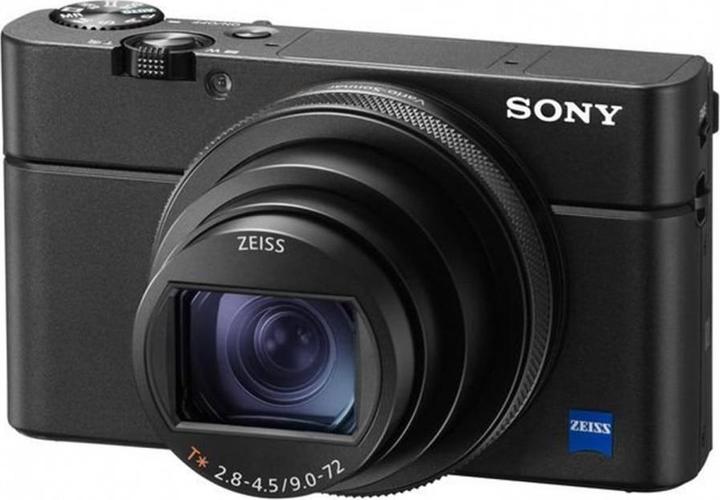

The Sony RX100 VI on test: a benchmark or just an overpriced camera?
Small, big zoom, good image quality: the RX100 VI excels in all areas. I was able to test this all-rounder. In this article, I also compare the latest version with a previous model of the RX100.
The perfect camera is small and light, has a long zoom range, a large sensor and a bright lens, it's fast and has plenty of buttons for manual control. And, of course, it doesn't cost the earth.
There's no such thing as the perfect camera. You always have to make a few compromises. An entry-level SLR offers you high image quality and affordability, but is big and heavy. A typical super-zoom camera offers you a dream zoom, is conveniently sized and affordable, but its image quality isn't particularly good. Each type of camera has its advantages and disadvantages.
A near-perfect model
With the RX100, Sony has created something that could be described as a near-perfect camera. Although it fits in a pocket, it has a large sensor (1-inch diagonal) for a compact camera, a retractable viewfinder and plenty of manual controls. The latest version of the RX100 VI also offers a wide zoom range of 24-200mm (all focal length specifications in this article have been converted to 35mm/full format). The fact that Sony has simply tripled the tele range without enlarging the camera is really quite a challenge.

But even for this camera, concessions had to be made. It's hard to defy the laws of physics. Light intensity is much lower than the old RX100 with less zoom. Even the initial light intensity is relatively modest at f/2.8 compared with the f/1.8 of previous models or even the f/1.4 of the competition.
And let's not even talk about the price. Snif!
The lens seen objectively
In this test, I will often compare the new VI model with the III model. Firstly because I own and can therefore try out the III version myself, and secondly because all the models are still available and it would therefore be unwise to compare it only with the previous year's model.
The specifications only show light intensity with the minimum and maximum focal lengths. And between the two? With a focal length of 70mm, the light intensity is f/4, which is one f-stop less than previous models (f/2.8). f/4 is already at its peak at 40mm. After all, it remains so up to 100mm, making the lens brighter than the first two RX100s (f/4.8) at this focal length. (The new ones can't even zoom in that far.) Light intensity at maximum focal length is the best: 200mm and f/4.5 offer very nice depth of field (Bokeh) with this sensor size.

Here's all the data mentioned above displayed clearly in a table - if you enter any of the missing values in a comment, I'll complete the table.
| Focal length (KB) | Luminous intensity RX100 I | **RX100 III | RX100 V | RX100 VI |
|---|---|---|---|---|
| 24 mm | f/1.8 | f/1.8 | f/1.8 | f/2.8 |
| 40 mm | ? | f/2.8 | ? | f/4 |
| 70 mm | ? | f/2.8 | f/2.8 | f/4 |
| 100 mm | f/4.8 | - | - | f/4 |
| 200 mm | - | - | - | f/4.5 |
The minimum distance at 200mm is about one metre. Maximum magnification is not possible at tele or wide-angle, but somewhere in between, probably at 60mm. Macro capability is better than the RX100 III, which I'm using here for comparison. Not only can I magnify more, but at 60mm the image distorts much less than with the wide-angle you have to use with the RX100 III (and most other compact cameras) for maximum magnification. Here's an example of the maximum size you can achieve at close range.

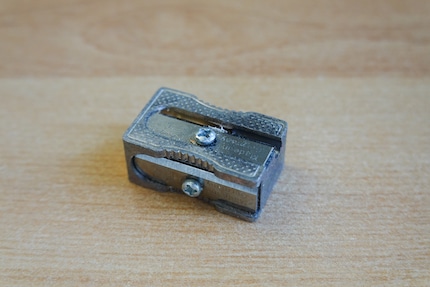
Image quality
In the practical test, there's virtually no difference between the image quality of version 3 and version 6 of the RX100 (pre-production model). Maybe you don't think that's a good thing, because a newer, even more expensive camera should be better. But don't forget that you generally get more zoom at the expense of image quality. The fact that the camera with a much longer zoom range doesn't take worse pictures is more of a positive for me.
The following photos were taken with ISO 125 and f/5.6 in A mode. Both cameras have the same resolution. These are comparisons in Lightroom (screenshots). On the left, the photos from version III, on the right, those from version VI. As Lightroom can't yet read the RAW format of the new camera, I've done everything in JPEG. You can download the images here to compare.
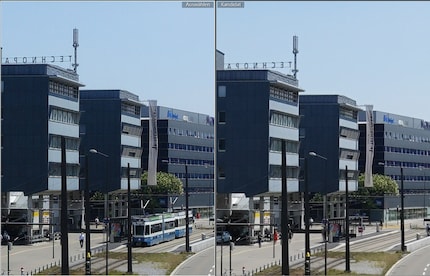
Below, an ISO 6400 shot of our break room and more specifically the inside of the microwave oven. Compared to the RX100 III, the image is certainly more stable, but also a little less sharp. As I can only compare JPEGs at the moment, the test is not very meaningful. I think that the RX100 VI uses stronger noise reduction by default and therefore produces different images. That's why, in the download test files, you'll find - for later - also the RAW files of the following photos.
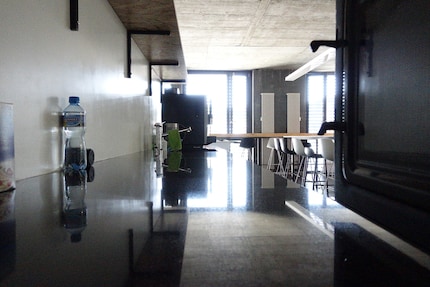

Handling
The RX100 has always been equipped with a retractable electronic viewfinder. Until now, this wasn't exactly convenient, as the viewfinder not only had to be unfolded, but also pulled out horizontally. This is no longer the case. Once extended, the VI version's viewfinder is immediately ready for use. Admittedly a small detail, but one that is very important in everyday photography. In the user menu, you can choose whether you want the camera to switch off automatically when the viewfinder retracts.
The LCD screen has also been improved: it can now be unfolded to around 90 degrees instead of just 45 degrees. It's still not possible to turn it sideways.
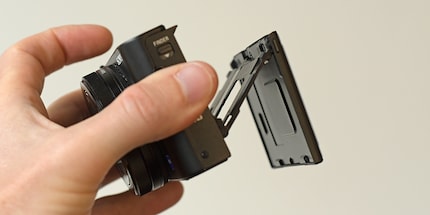
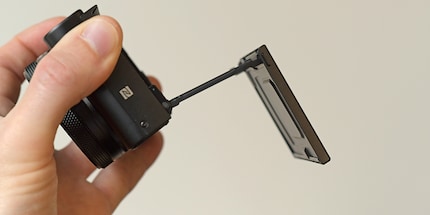
You can set up the camera to suit your preferences. The functions menu, which displays the most important settings during shooting, is fully configurable. You also have a wide choice of functions for the lens dial.
I've criticised it before in the A7 III and I'll say it again: the user menu on Sony cameras is a nightmare. And the more options, the worse it gets. Incomprehensible and useless abbreviations, cryptic names galore. Existing options are also frequently changed: even experienced Sony photographers get lost in the menu from time to time. At least: the RX100 VI now offers a favourites menu in which you can group the items you use most often.
According to the manufacturer's data (CIPA standard), battery life has been steadily declining since version II: from 350 photos to 220, the VI model is still average at 240 photos. People who switch from an older RX100 to a more recent version can continue to use their batteries. It's still the same NP-BX1. On my week-long mountain hike without electricity (in German), I took two spare batteries with me, and that was barely enough.

Like all RX100 models, the number VI also has no lens cap. When you switch it off, slats cover the lens glass. In principle, very practical: the camera is quickly ready for use, the lens can be fully retracted and you don't have to keep looking for the lens cap. Here's the rub: this lamellar solution is much more fragile and breaks quickly. Which can be a problem given the price of the camera.
On my hike, I carried the camera in the belt pocket of my rucksack so that I could quickly take it out at any time. I hit at least two rocks and the camera didn't like it too much. The slats didn't open and close for a while. Thankfully they are working again.
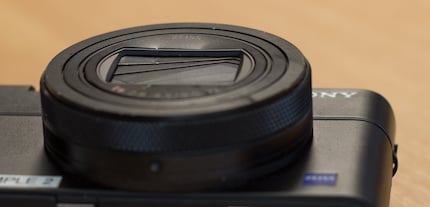
The Sony carrying case offers reliable protection. As the dimensions of the camera are almost still the same, you can also store the new model in it. However, I don't find the case practical if I want to snap a couple of quick shots as I go.
Sport and action fit
Sony praises the speed of the RX100 VI. The burst function takes 24 photos per second, and the hybrid autofocus with 315 contrast points should be very fast. With the telephoto lens, the camera should also be suitable for sports, action and wildlife photography.
And, indeed, it doesn't do badly at all. Of course, if you know you'll be shooting at a sporting event, you're more likely to bring out the heavy artillery. But if, for example, you're out for a walk and an action scene unfolds in front of you, you can capture it with the new RX100 without a problem.
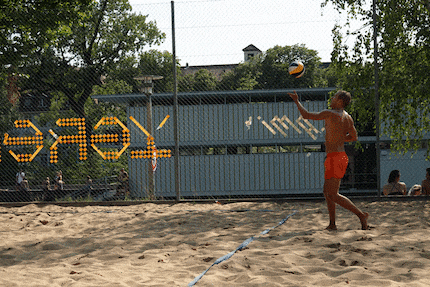

Even with the RAW + JPEG setting, the burst function is super-fast. With JPEGs, you can't do any better, just longer. The buffer memory is then sufficient for almost ten seconds or 233 photos, compared with around 100 photos with RAW + JPEG. Which is also quite sufficient. But because huge amounts of data are generated, the process of writing to the card takes a long time, so the buffer only empties slowly. So if you capture several scenes one after the other, you're likely to reach the limit pretty quickly.
Thankfully, Sony has thought of grouping scenes in display form. A series with 100 photos can thus be deleted in one go.
You can always see the image in the viewfinder during continuous shooting. This makes the viewfinder a great aid when capturing an action scene. With the LCD screen alone, I wouldn't be able to 'capture' the patterns as quickly. Autofocus subject tracking also works well. Thanks to the small sensor, the autofocus doesn't need to be as precise as a full-frame camera.

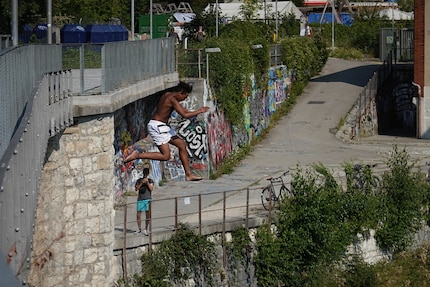
Video: good, but not much new
I won't go into detail about the video function here. Sony advertises the RX100 VI as a vlogging camera, but this has more to do with the current vlogging craze than the fact that the camera has made great strides in this regard. The touchscreen and eye autofocus are certainly useful when you're filming yourself, but that's about it. There's still no microphone input, and the internal microphone makes the noise of the zoom motor clearly audible. 4K is still limited to a maximum of 5 minutes at a time. And the HFR function allows slow-motion shooting, but the differences with the IV and V models are marginal. S-Log support is also nice, but nothing new.
Overview
The extended zoom range considerably widens the scope of applications compared to all previous models. Combined with the ultra-fast burst mode, excellent autofocus and viewfinder, the camera is even suitable for action. And the telephoto lens is particularly well suited to this. This camera is a real success story: the individual features work perfectly together.
I only have two points of criticism. Firstly: I find it hard to find my way around the menu structure, even after a long time. Secondly, a camera this expensive should be very robust. This isn't really the case with the lens cover. It's super fragile and if it breaks, you'll have spent 1500 francs in the wind.
The improvements over previous models are significant. But if you don't need a telephoto zoom and you're not interested in action, you don't necessarily need the latest model, because it's excessively expensive. Previous models offer just as good image quality, they're just less versatile.
Updated, 24.7.
As if six different versions of the RX100 weren't enough, Sony has just released an improved version of the RX100V. According to dpreview.com (in English), it features the latest processor, which removes image noise even better, the same size buffer for serial shots as the new VI version (233 JPEGs instead of 150), improved focus and a few extra details. However, the upgrade currently costs 300 francs more than the normal Series 5 model, making it, in my opinion, the variant with the least value for money.
My interest in IT and writing landed me in tech journalism early on (2000). I want to know how we can use technology without being used. Outside of the office, I’m a keen musician who makes up for lacking talent with excessive enthusiasm.



